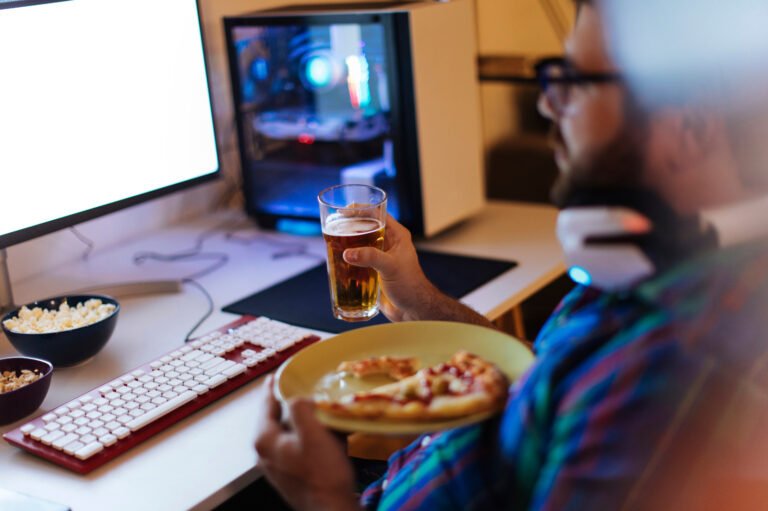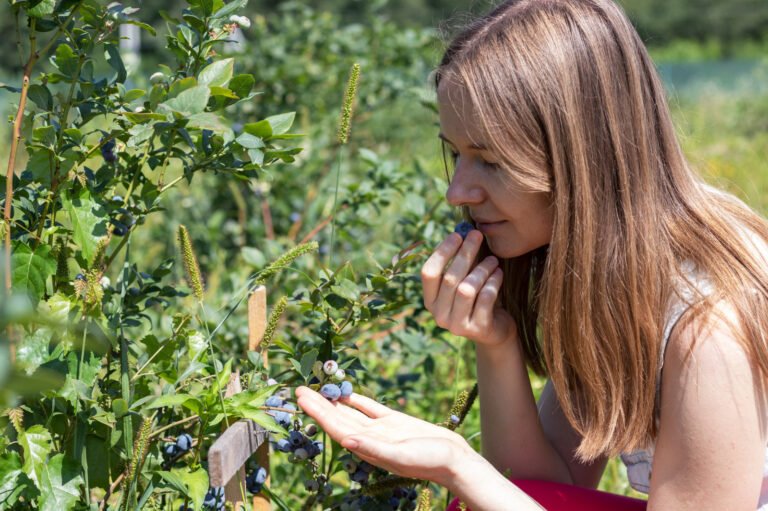The Behavioral Science Guide to Eating Healthily: 9 Hacks You Need to Know
Kanjul Verma
March 3, 2023. 4 minute Read
"
In this article, we will explore nine behavioral science hacks that can help you develop a more mindful and balanced approach to eating.
- Table of Content
- What is Behavioral Science?
- 9 Behavioral Science Hacks to Eat Healthily
- Keep Food out of Sight, out of Mind
- The Power of Small Plates
- Mindful Eating
- Meal Prepping for Success
- The Buddy System
- Celebrate Progress, Not Perfection
- Embrace Variety for a Nutrient-Packed Plate
- Be Mindful of Emotional Eating
- Practice Moderation, Not Deprivation
- How Behavioral Science Works to Help Us Eat Healthily?
- Final thoughts
Are you looking for practical tips to improve your eating habits and lead a healthier lifestyle?
If so, you're in the right place!
Behavioral science offers valuable insights into human behavior and psychology, and it can be a game-changer when it comes to making positive changes in our lives, particularly in the realm of nutrition.
By understanding how our minds work and the influences that impact our food choices, we can apply simple yet effective strategies to eat healthier without feeling deprived or overwhelmed.
But before that, let us first know what is behavioral science?
Let’s get started

What is Behavioral Science?
Behavioural science is basically a field of study that looks at how people behave and why they behave the way they do. It’s all about understanding human behavior, whether it’s how we make decisions, interact with others, or even how we think and feel.
A critical concept in behavioural science is that our behaviour is often influenced by things we might not even be aware of.
Sometimes our actions are driven by unconscious biases, social norms, or even subtle environmental cues. These factors can have a significant impact on our decisions, even if we don’t realise it.
By understanding why people act the way they do, we can find ways to change behaviour for the better and make informed decisions.
Let’s know how some behavioural science hacks can make us eat more healthily than ever!
9 Behavioral Science Hacks to Eat Healthily
Let’s get started!

1 .Keep Food out of Sight, out of Mind
Did you know?
Our environment plays a role in our eating habits.
Research shows that people tend to eat more of the foods that are easily accessible and visible.
By keeping unhealthy snacks out of sight, tucked away in cupboards or hidden containers, you reduce their temptation.
In fact, studies have found that simply moving a candy dish from a desk to a drawer led to a significant decrease in candy consumption.
So, get those bags of potato chips replaced with vibrant fruits and colorful vegetables that catch your eye whenever you open the fridge.
Related Article: Not Fad, But Learn the Importance of Healthy Eating here

2 .The Power of Small Plates
Believe it or not!
The size of your plate can influence your eating habits.
It’s a mind-boggling phenomenon called the Delboeuf illusion.
When you serve food on smaller plates, your brain perceives the portion as larger, even if it contains the same amount of food.
This hack tricks your mind into thinking you’re getting a generous portion, which can help control overeating and lead to fewer calories consumed without even realising it.

3. Mindful Eating
In our fast-paced world, we often rush through meals without truly savoring them.
Mindful eating brings us back to the present moment, allowing us to fully experience the pleasure of eating.
Did you know that it takes around 20 minutes for your brain to register feelings of fullness?
By slowing down and paying attention to each bite, you give your brain time to catch up with your stomach.
Plus, research suggests that practising mindfulness while eating can enhance your enjoyment of food and promote healthier food choices.
Related Article: Importance of Balanced Diet that You Need to Know.

4. Meal Prepping for Success
You can use meal prepping as a secret weapon when it comes to maintaining a healthy diet.
By dedicating some time to prepare your meals in advance, you set yourself up for success throughout the week. Not only does it save time and reduce stress, but it also helps you make more mindful choices.
When you have a fridge stocked with pre-cut fruits and veggies, pre-cooked lean proteins, and portioned-out snacks, you eliminate the need for impulsive and less nutritious options.
Related Article: 10 Fast Immune Boosting Foods for Rapid defense.

5. The Buddy System
Did you know?
A support system can significantly impact your eating habits.
Research shows that when you start eating healthy with a friend or family member, you’re more likely to stick to your goals.
It’s all about accountability, motivation, and shared experiences. Plus, when you have a workout or cooking buddy, it makes the journey more enjoyable and exciting.
You can even swap recipes, try new foods together, and celebrate milestones along the way!

6. Celebrate Progress, Not Perfection
Here's a fascinating fact!
Studies have shown that celebrating your progress, no matter how small, can boost your motivation and increase your chances of long-term success.
Instead of beating yourself up for occasional slip-ups, focus on the positive changes you’ve made.
For example:
- If you chose a nourishing salad over a greasy burger?
Excellent!
- If you resisted from that tempting dessert and opt for a piece of fruit instead?
Bravo!
Acknowledge these achievements and reward yourself with non-food treats such as
![]() A relaxing massage,
A relaxing massage,
![]() A new workout outfit, or
A new workout outfit, or
![]() A fun day out.
A fun day out.
Remember, the journey to healthy eating is about progress, not perfection.

7. Embrace Variety for a Nutrient-Packed Plate
Did you know?
Incorporating a wide variety of foods into your meals can have a profound impact on your health.
Each food item brings its own unique set of nutrients to the table, so the more diverse your plate, the better. Aim for a rainbow of fruits and vegetables, lean proteins, whole grains, and healthy fats.
By doing so, you’ll ensure your body receives a wide array of vitamins, minerals, and antioxidants it needs to thrive.

7. Be Mindful of Emotional Eating
Feeling stressed, sad, or bore!
And now you have the desire to reach for a tub of ice cream or a bag of chips?
We’ve all been there!
Emotional eating can sabotage our efforts to eat healthily.
The key is to be mindful of this behaviour and find alternative ways to cope with emotions.
Engaging in activities like going for a walk, meditating, journaling, or talking to a friend can help you break the cycle of turning to food for comfort.

8. Practice Moderation, Not Deprivation:
One of the keys to maintaining a healthy diet is finding the right balance.
It’s important to enjoy your favourite foods in moderation rather than completely depriving yourself.
Completely cutting out your favourite treats may lead to feelings of restriction, which can backfire in the long run. Instead, indulge in your cravings occasionally but in controlled portions.
This way, you satisfy your taste buds while still keeping your overall dietary habits in check.
Now that you know these hacks, you must be wondering how this actually works; what are the principles behavioural science is based upon, right?
Let’s discuss this further!
How Behavioral Science Works to Help Us Eat Healthily?
Here’s how it works!
1. Habits and Triggers
Behavioural science recognizes that many of our eating behaviours are driven by habits. Habits are automatic behaviours triggered by cues in our environment or specific situations.
For example, grabbing a bag of chips while watching TV or reaching for a sugary treat when feeling stressed.
By identifying the triggers that prompt unhealthy eating habits, we can interrupt the cycle and replace them with healthier alternatives.
2. Decision-Making
Sometimes, we make food choices that don’t make much sense, right?
That’s because our brains don’t always work logically. We have these mental shortcuts or biases that can lead us astray.
For example, we might go for instant pleasure instead of long-term benefits.
Behavioural science helps us understand these biases so we can make smarter, healthier decisions.

3. Environmental Influences
Think about it: if you have a bowl of fresh fruits sitting on the counter, you’re more likely to grab one as a snack.
That’s what we call “choice architecture.” By setting up our environment to make healthy options more visible and tempting, we’re more likely to choose them.
4. Rewards and Reinforcement
Our brains love rewards, especially when it comes to food. Unhealthy treats often give us instant gratification, making us want more.
But we can rewire our brains by finding healthier ways to satisfy our cravings. It’s all about discovering alternative rewards that make us feel good without sacrificing our health.
5. Social Norms and Support
We’re influenced by the people around us, especially when it comes to food. If our friends or family members are into healthy eating, we’re more likely to follow suit.
That’s why having a supportive community is so important. When we’re surrounded by folks who encourage and motivate us, it becomes easier to stick to healthy choices.
Final Thoughts
In conclusion
Behavioral science provides valuable insights and practical strategies to help us make healthier food choices.
By understanding the psychological factors that influence our eating behaviors, we can apply various hacks to improve our dietary habits.
By making healthy choices more convenient, attractive, and enjoyable, we can overcome common obstacles and develop long-term habits that promote overall well-being.
So, why not give these behavioral science hacks a try and start a healthier lifestyle today?
Subscribe to new post
The One Liner
Useful Links
Order Related Queries
Useful Links
Order Related Queries



